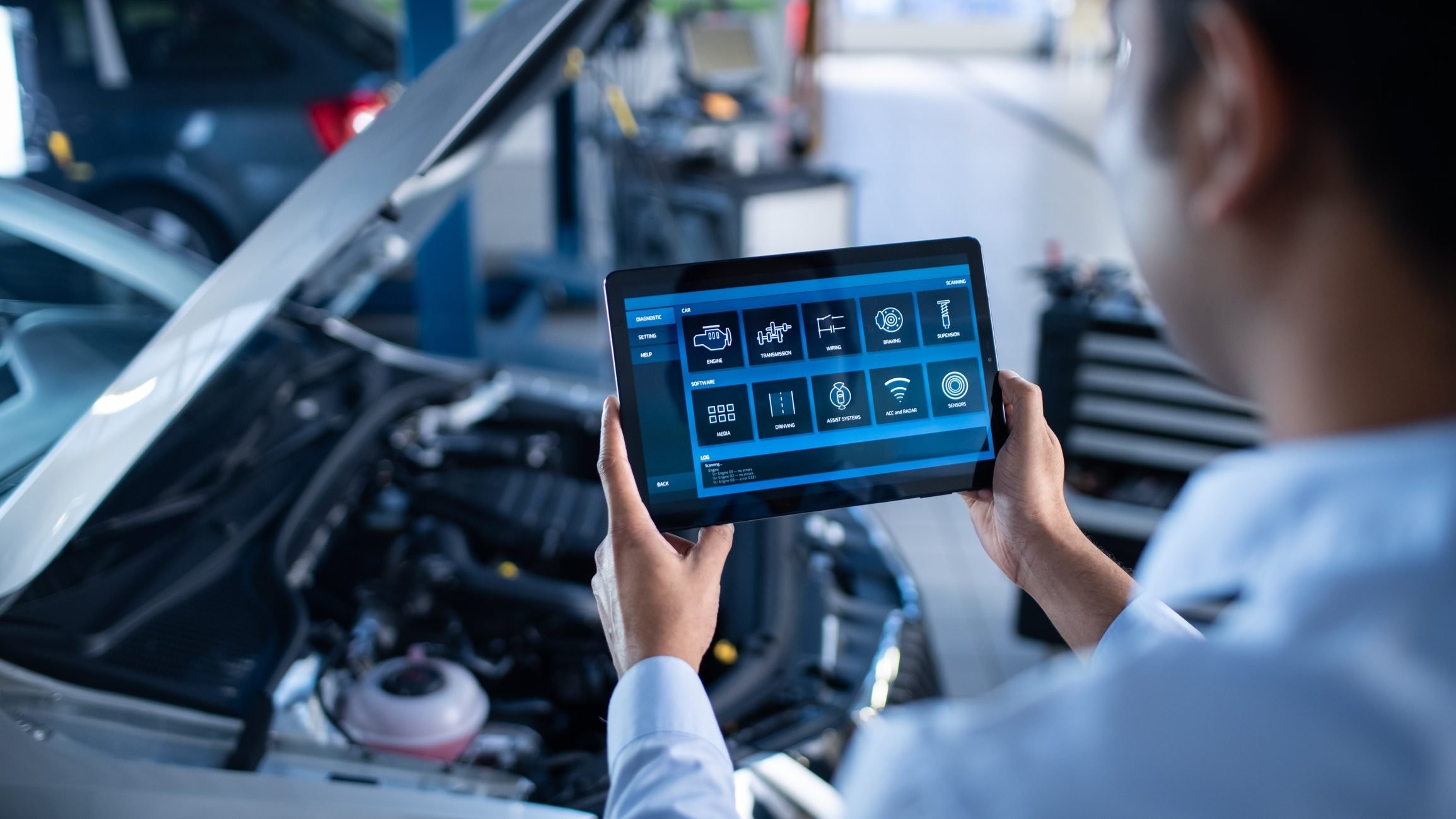Navigating car troubles can be stressful, especially when the check engine light illuminates on your dashboard. Fortunately, a diagnostic car reader, also known as an OBD2 scanner, can be a powerful tool in understanding what’s happening under the hood. These devices allow you to communicate with your vehicle’s computer and retrieve diagnostic trouble codes (DTCs), providing valuable insights into potential issues. Understanding how to use a diagnostic car reader can empower you to troubleshoot problems, decide on repair strategies, and potentially save money on unnecessary mechanic visits.
Understanding Diagnostic Trouble Codes (DTCs)
Diagnostic trouble codes are essentially error messages generated by your car’s onboard computer system when it detects a malfunction. These codes point to specific systems or components that are not performing as expected, often triggering the check engine light. DTCs are standardized across the automotive industry and consist of a five-character alphanumeric code. While the raw code itself might seem cryptic (like P0171), a diagnostic car reader can translate these codes into plain English descriptions, offering a clearer understanding of the problem.
It’s crucial to remember that while a diagnostic car reader is incredibly helpful, it’s not a magic bullet. It pinpoints a potential problem area, but further investigation is often needed to accurately diagnose the root cause. For example, a DTC indicating a lean oxygen sensor reading could stem from a faulty sensor, a vacuum leak, or even a fuel delivery issue.
Can You Retrieve Engine Codes Without a Scanner?
While a diagnostic car reader is the most reliable and user-friendly method, some older vehicles offer alternative ways to access DTCs without specialized tools. According to automotive experts, certain makes and models might display codes through the dashboard display by cycling the ignition key in a specific sequence (typically on and off multiple times). Some manufacturers, like Toyota, have even been known to display codes via the radio display in certain models.
However, it’s strongly advised against attempting to retrieve codes by manually “jumping” pins on the data port with a paper clip or similar objects. This outdated and risky practice can seriously damage the data port terminals, rendering it unusable for future diagnostic readers and potentially causing further electrical issues. Using a proper diagnostic car reader is the safe and recommended approach.
Step-by-Step Guide: How to Use a Diagnostic Car Reader
Using a diagnostic car reader is generally straightforward. Here’s a step-by-step guide to get you started:
-
Locate the OBD2 Port: The OBD2 (On-Board Diagnostics II) port is a standardized connector in your vehicle, usually located under the dashboard on the driver’s side. Refer to your car’s owner’s manual if you have trouble finding it. It’s typically a 16-pin trapezoidal connector.
-
Turn the Ignition to “On” (Engine Off): Insert your car key and turn the ignition to the “On” position. This activates the car’s electrical system and computer without starting the engine.
-
Plug in the Diagnostic Car Reader: Connect the diagnostic car reader to the OBD2 port. Ensure it’s firmly plugged in. Most readers will power on automatically or have a power button.
-
Follow the Reader’s Instructions: Each diagnostic car reader may have slightly different interfaces, but the basic process is similar. Navigate the menu using the buttons on the device. Look for options like “Read Codes,” “Trouble Codes,” or “Diagnostics.”
-
Read and Record the DTCs: The reader will scan your vehicle’s computer and display any stored DTCs. Record these codes, along with their descriptions. Many readers will provide a brief explanation of the code’s meaning directly on the screen. For more detailed information, you can search for the specific DTC online.
-
Understand the Codes: Use the reader’s descriptions and online resources to understand what each code signifies. Remember, the code points to a potential problem area, not necessarily the exact faulty part.
-
Decide on the Next Steps: Based on the DTCs and your understanding of the issue, decide whether you can address the problem yourself or if professional help is needed. For minor issues like a loose gas cap (often triggering EVAP system codes), you might be able to resolve it yourself. For more complex problems, it’s best to consult a qualified mechanic.
Clearing Engine Codes
After you’ve addressed the issue that triggered the check engine light and DTCs, you’ll likely want to clear the codes and turn off the light. Here are two methods:
-
Using a Diagnostic Car Reader: Most diagnostic car readers have a “Clear Codes” or “Erase Codes” function. After selecting this option and following the prompts, the reader will send a command to your car’s computer to clear the stored DTCs and reset the check engine light. It’s important to note that clearing codes does not fix the underlying problem; it only clears the symptom. If the issue persists, the check engine light will likely reappear, and the codes will return. Also, scan tools typically cannot reset “readiness monitors,” which are system checks performed by the vehicle.
-
Battery Disconnection (Less Reliable): Disconnecting the car battery for about 10 minutes can sometimes clear DTCs. To do this safely, disconnect the negative (black) battery cable first, followed by the positive (red) cable. Always take safety precautions when working with car batteries, including wearing gloves and eye protection. Wrap the positive cable terminal with a cloth or tape to prevent accidental short circuits. While this method might clear codes, it’s less reliable than using a scan tool and can sometimes cause other issues, like resetting radio settings or requiring the engine computer to relearn idle settings. Using a diagnostic reader is generally the preferred method for clearing codes.
Where to Get Your Vehicle Diagnostic Trouble Codes Checked for Free
If you prefer not to purchase a diagnostic car reader right away, several places offer free DTC checks:
-
Auto Parts Stores: Many national auto parts chains provide free DTC reading services. Technicians at these stores can use their diagnostic tools to retrieve codes and provide you with the basic code descriptions. Keep in mind that their expertise is generally limited to basic code retrieval and parts sales, not in-depth diagnosis or repair.
-
Some Auto Repair Shops: Some independent auto repair shops might offer a free or minimal-fee DTC check, especially for loyal customers or as a way to attract potential repair business. It’s always worth calling ahead to inquire about their policy.
-
Neighborly Assistance: You might be surprised to find that a neighbor or friend owns a diagnostic car reader and would be willing to help you check your codes. This can be a convenient and free option if you have connections within your community.
Common Engine Codes and Their Potential Meanings
While a diagnostic car reader will provide a description for each code, understanding some common engine codes can be helpful. Here are a few examples:
-
P0119: Engine Coolant Temperature (ECT) Sensor Circuit Intermittent. This code indicates an issue with the ECT sensor, which monitors engine coolant temperature. It can affect engine performance and drivability. Replacing the ECT sensor is often a DIY-friendly task after draining some coolant.
-
P012X/P022X: Throttle/Pedal Position Sensor (TPS) Circuit Malfunction. These codes point to problems with the TPS, which measures the throttle pedal position. A faulty TPS can lead to issues like fluctuating idle, surging, and stalling. Cleaning the throttle body might resolve TPS-related problems in some cases.
-
P0128: Coolant Thermostat Below Coolant Regulating Temperature. This code suggests the engine is running colder than expected, often due to a faulty thermostat or air in the cooling system. “Burping” the coolant system or replacing the thermostat are potential DIY solutions.
-
P0137-P0147: Oxygen Sensor (O2) Circuit Low Voltage (Bank 1, Sensor 2). These codes indicate issues with the O2 sensors, which monitor the air-fuel mixture in the exhaust. Lean or rich air-fuel mixtures can cause poor performance and fuel economy. O2 sensor issues might require professional diagnosis, but replacing an older sensor (over 50,000 miles) can sometimes be a DIY fix.
-
P0171-P0177: System Too Lean (Bank 1/Bank 2). Similar to O2 sensor codes, these indicate lean or rich air-fuel mixtures. Common causes include clogged air or fuel filters, dirty fuel injectors, or a malfunctioning Mass Air Flow (MAF) sensor. Replacing filters and cleaning injectors or the MAF sensor are often DIY-able.
-
P030X: Cylinder X Misfire Detected. This code indicates a misfire in a specific cylinder (e.g., P0305 is cylinder 5). Misfires can be caused by various issues, from worn spark plugs to more serious engine problems. Spark plug replacement is a common DIY repair for misfires.
-
P0340-P034B: Camshaft Position Sensor (CMPS) Circuit Malfunction. CMPS codes indicate problems with the camshaft position sensor, which is crucial for engine timing and fuel delivery. CMPS issues can lead to hard starting or no-start conditions. CMPS repairs are generally best left to professionals.
-
P0400-P040E: Exhaust Gas Recirculation Flow Insufficient Detected. EGR codes suggest issues with the Exhaust Gas Recirculation system, which reduces emissions. A clogged EGR valve is a common cause and can sometimes be cleaned DIY.
-
P0446-P0448: Evaporative Emission Control System Vent Control Circuit Malfunction. EVAP codes often relate to the evaporative emissions system, which prevents fuel vapors from escaping into the atmosphere. A loose gas cap is a common culprit, but EVAP codes can have various causes, sometimes requiring professional diagnosis.
Conclusion
A diagnostic car reader is an invaluable tool for any car owner who wants to understand their vehicle better and take a proactive approach to maintenance and repair. By learning how to use a diagnostic car reader, you can gain insights into potential problems, make informed decisions about repairs, and potentially save time and money. While it’s not a substitute for professional mechanic expertise, a diagnostic car reader empowers you to be a more informed and engaged car owner.


